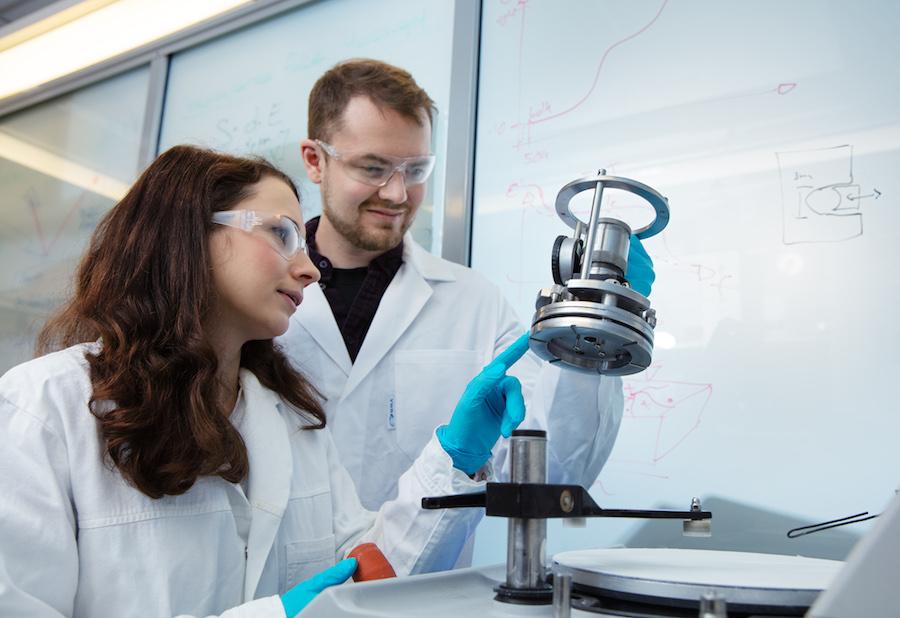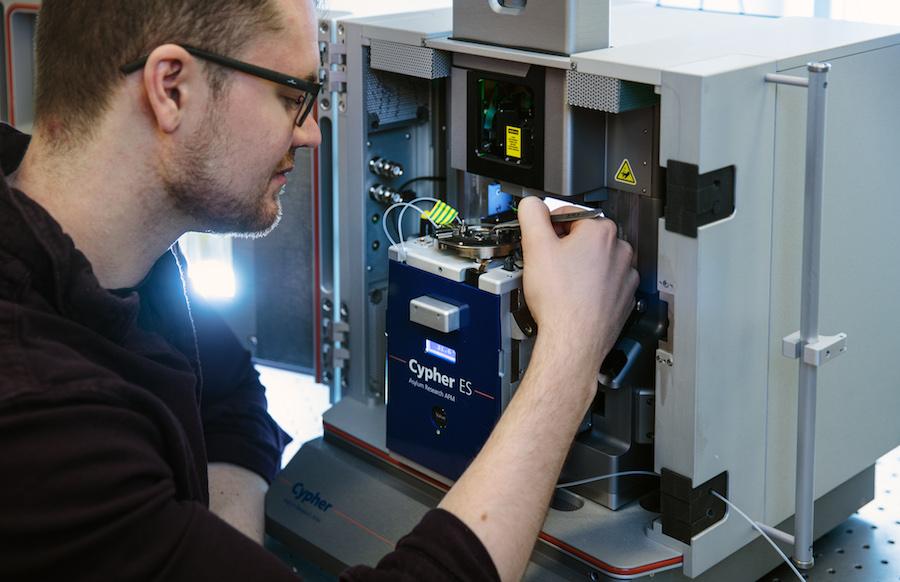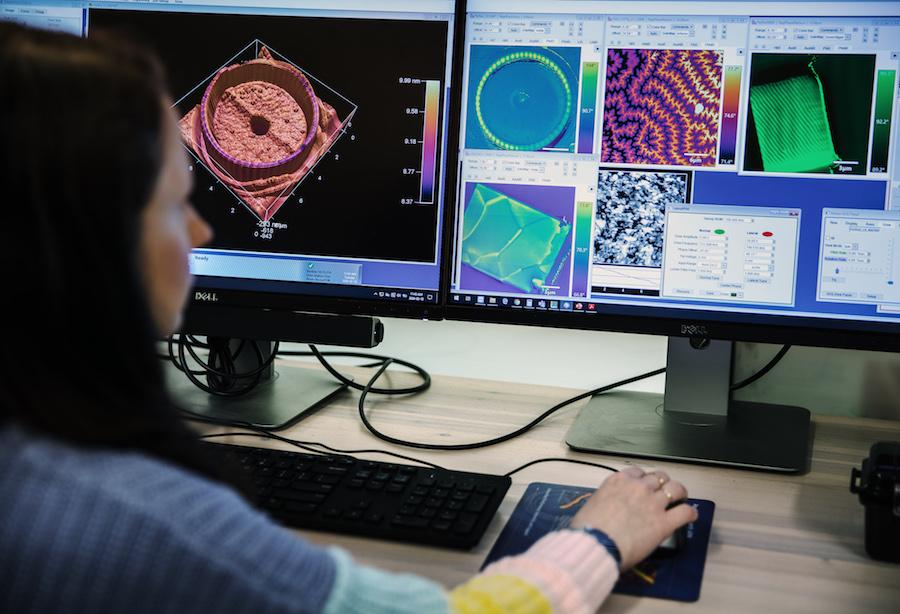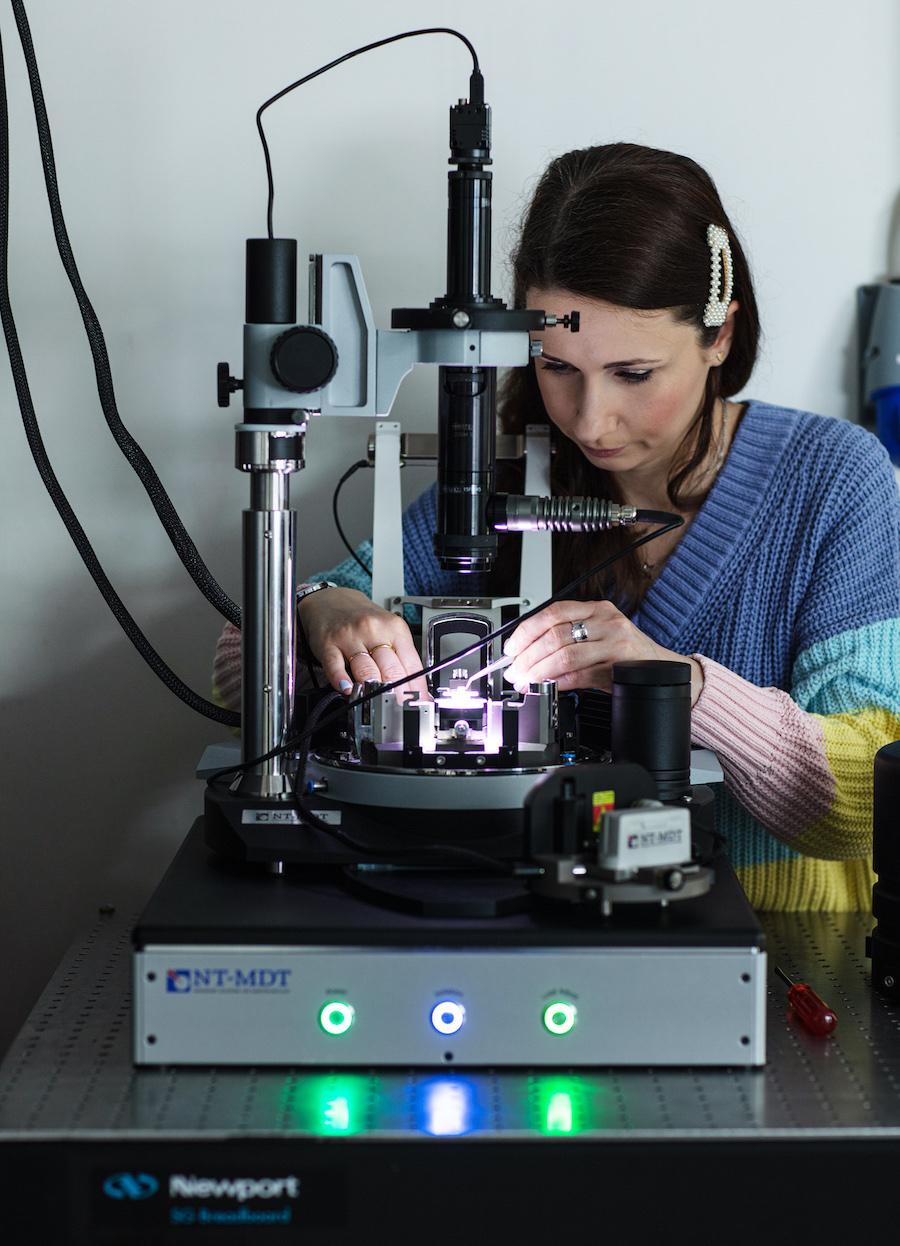Scanning Probe Microscopy Lab
Scanning Probe Microscopy Lab

Theme and goal
The intriguing functional properties and nanoscale physics of magnetic skyrmions led to an explosion of interest in topological spin textures. Skyrmions are stable magnetic whirls that give rise to emergent electrodynamics, and their position and motion can be controlled at ultra-low energy costs. Due to these outstanding properties, skyrmions hold great promise as functional nano-objects for future spintronic devices including next-generation racetrack memories.
Up to now, either skyrmion lattices or skyrmions in a ferromagnetic background have been investigated. With our experiments, we have revealed that a much larger zoo of topological spin textures exists - even without the external magnetic field usually needed to stabilize skyrmions. In particular, we have observed that topological spin textures occur naturally in domain walls of helimagnetic order. These domain walls are distinctly different from conventional domain walls as encountered, for example, inferromagnets. Instead, they share strong similarities with grain boundaries of liquid crystals as they can possess a microstructure best described in terms of dislocations and disclinations. In contrast to liquid crystals, these crystalline defects also correspond to topological spin textures and are endowed with an additional functionality.
The goal of our research is to identify and demonstrate novel topological spin structures in chiral magnets that can be manipulated at ultra-low energy and allow device paradigms to be extended into new realms of magnetism.
Key questions
Our research explores functional properties in completely new types of topological spin textures, such as magnetic disclinations and dislocations, and helimagnetic domain walls. By applying state-of-the-art imaging methods, such as magnetic force microscopy, we aim to create fundamental knowledge about the physics of such spin textures: For example, we want to understand their formation process, topology-driven properties, and interactions. Furthermore, we study how electrical currents and magnetic fields control the position and movementof individual spin textures and investigate the dynamical nanoscale response. Ultimately, we want to understand if it is possible to utilize the new degrees of flexibility offered by the different topological spin textures to design next-generation spintronics devices.



